How Many Wood Finishes To Mix In Decorating The Living Room
Decor
How to Mix Wood Tones Like a Pro
June xvi, 2020 — Written by Julia Marcum
We recently received this e-mail from a reader:
Hello,
I have a design problem I was hoping might inspire a future post from team CLJ. I am moving into a new house and have a lot of clear stained pine furniture and a heirloom cedar chest I would like to keep. I want to add some new article of furniture pieces to our home and would dear to as well try mixing wood tones. I think pine should be easy to match with other things but the cedar chest is pretty distinctive and the new house too has wood trim on windows and doors to consider.
I have no pattern/art background and I'm having a hard fourth dimension understanding
1. How to know what is in the same wood tone family
ii. How to place a piece of furniture that might go well with our existing piece of furniture – I'1000 envisioning I could make a wood "swatch" that matches what I accept and have it around to stores but for online shopping I'm guessing it may come up downward to buying a bunch of things and returning them
Thanks for because this!
Cheers,
Nisha
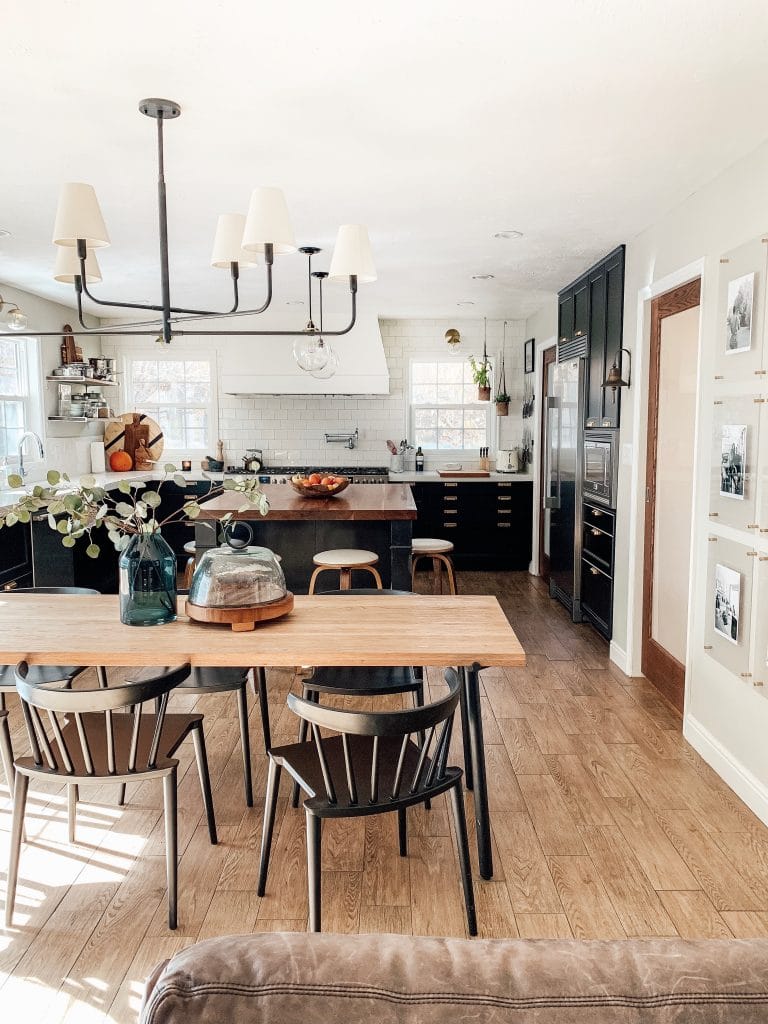 Our previous Dining Room/Kitchen
Our previous Dining Room/Kitchen
I thought, "Have we really never posted about mixing wood tones?!" And so I remembered my sister asking a similar question to Nisha'south when she moved into her very modern Seattle apartment: "All of the wood is blonde," she said. "Practice I really take to stick to this?"
No! You can and should mix forest tones. My communication? Keep your pine piece of furniture and your cedar chest. With a few easy "rules," yous tin have it all.
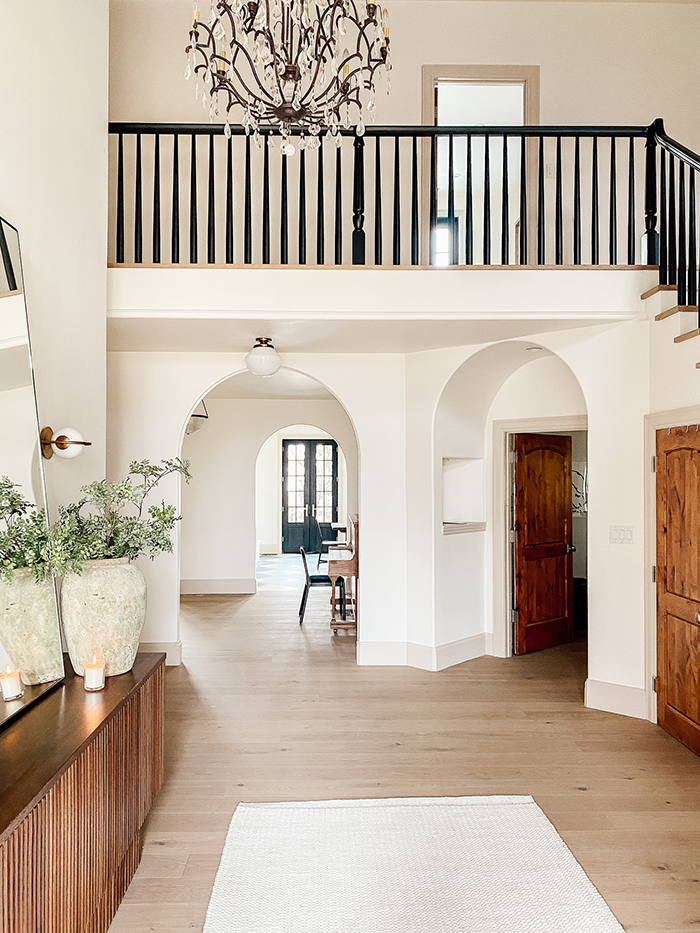
Our Entry
Let me start by saying — Using the aforementioned wood tone in a infinite can make everything wait apartment. Instead, become for a layered, lived-in look, with woods tones that both compliment and contrast. Equally y'all decorate your home over time, you pick up pieces along the way. These pieces won't match — and that'south the best office.
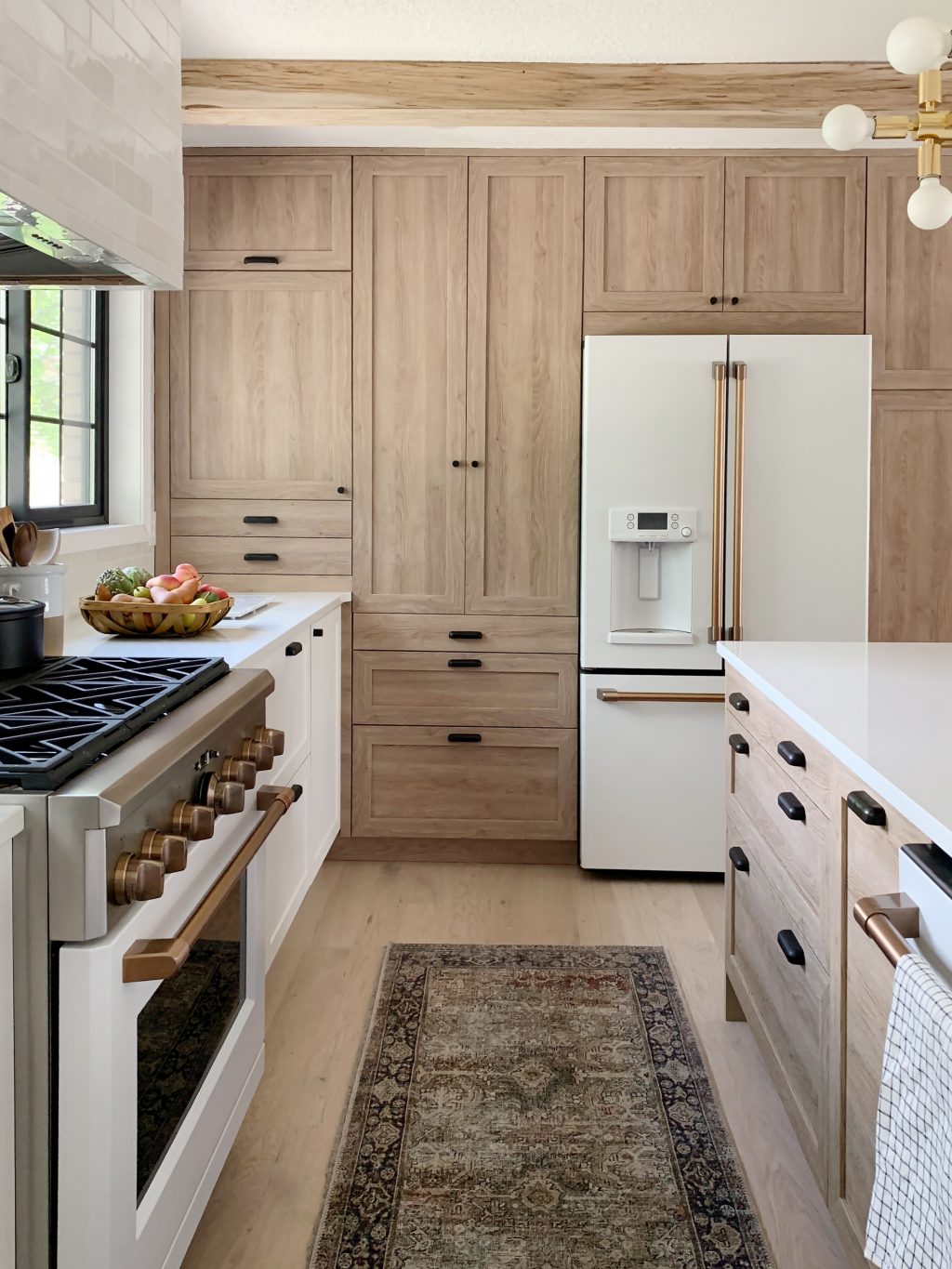
The Fullmer Kitchen
Start, find your ascendant wood tone. This could exist the floors or the largest piece of wood furniture or a wall of cabinets (especially if a rug is covering much of the hardwood floors). Next, introduce some contrast. Dissimilarity is okay! It's kind of what you're going for. Mixing a light wood with a dark wood will look intentional. For an easy formula: Choose a light, medium, and dark tone.
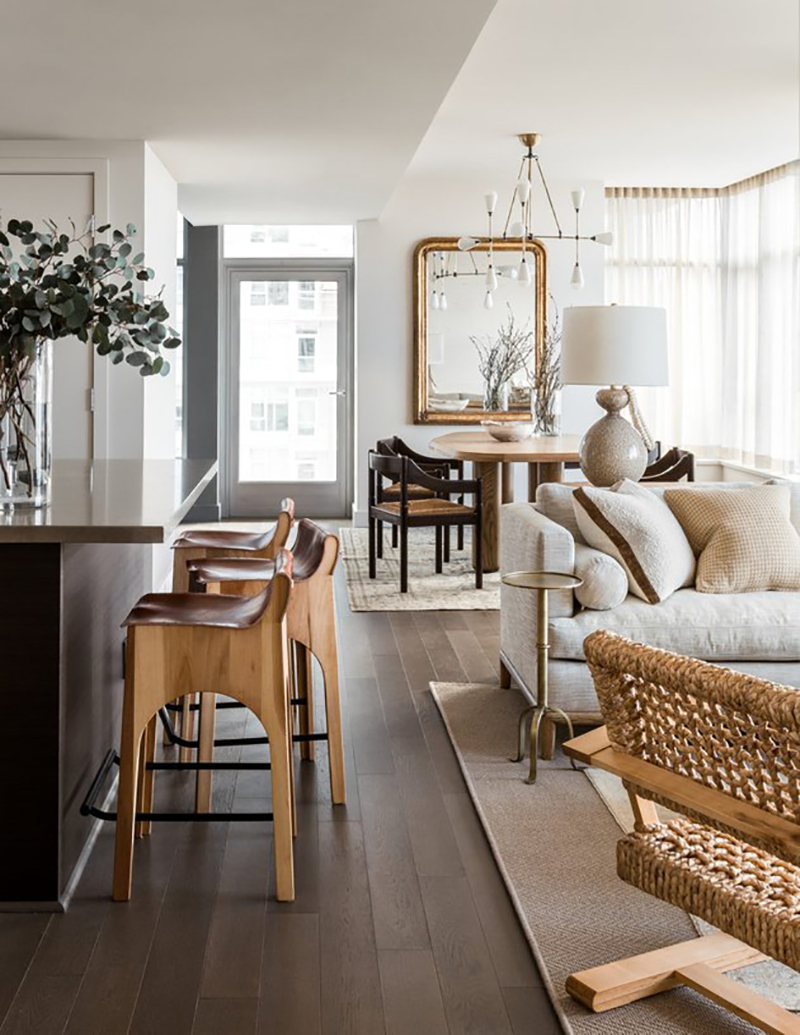
Source | Brian Paquette Interiors
Next, match the undertones. Virtually woods is warm. But accept notation at the nautical chart below! Walnut is versatile because it'southward so neutral, in which case the undertone could swing either way depending on the stain and the woods you lot pair information technology with. If your boss wood tone is warm, stick with warm woods. If your big piece is cool in tone — embrace it, and await for other pieces with blueish/grey undertones. There's no need to carry a wood swatch around. Just ask yourself, "Is this piece warm or cool?"
I honey this little crook sail from Room & Board:

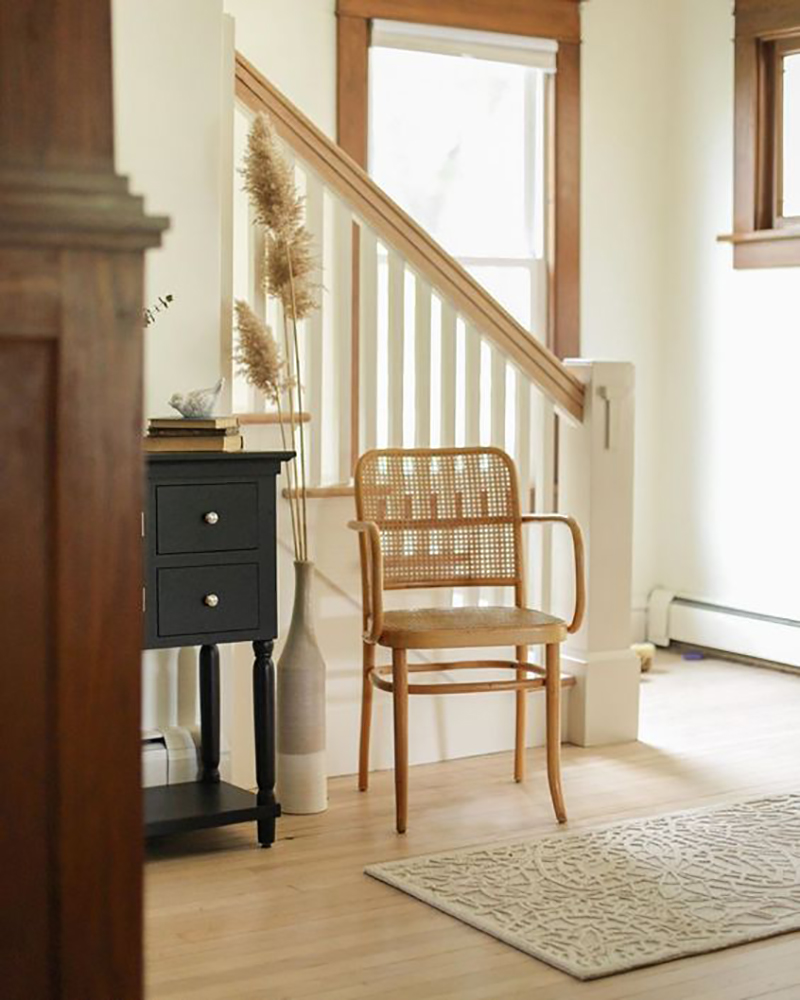
Source | Kindred Homestead
You tin go away with using all light wood tones, if that's your matter. This has a cute and peaceful affect. Only you're going to have a harder time making certain your woods tones don't clash when the divergence between your values is small. (Call back: The value is how light or nighttime something is; Tone is how warm or cool it is.)
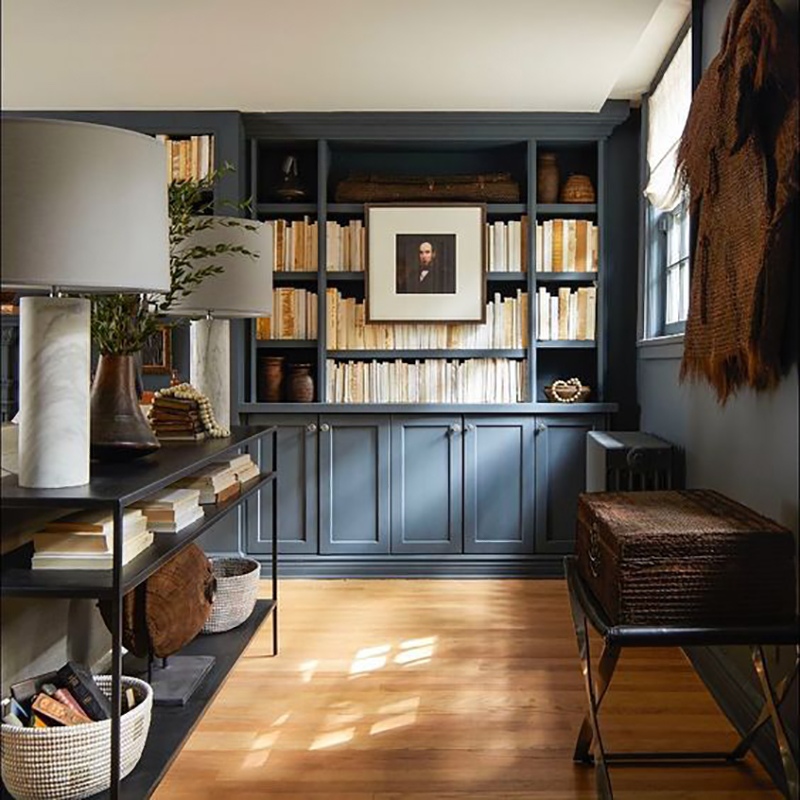
Source | Mikel Welch
Function of what makes a room feel cohesive is repetition. When mixing forest tones, each tone needs to exist represented at least twice in the room. When pairing forest tones, you could cull a slice as small every bit a bowl or a frame. Balance the woods tones around the room. Merely like you would in a gallery wall, avert "clustering" all of the wood tones in ane area. And speaking of gallery walls, this is a great place to tie in a forest tone that needs duplication. If a chair or an end table is the merely piece in its tone, expect for a frame in the aforementioned tone.
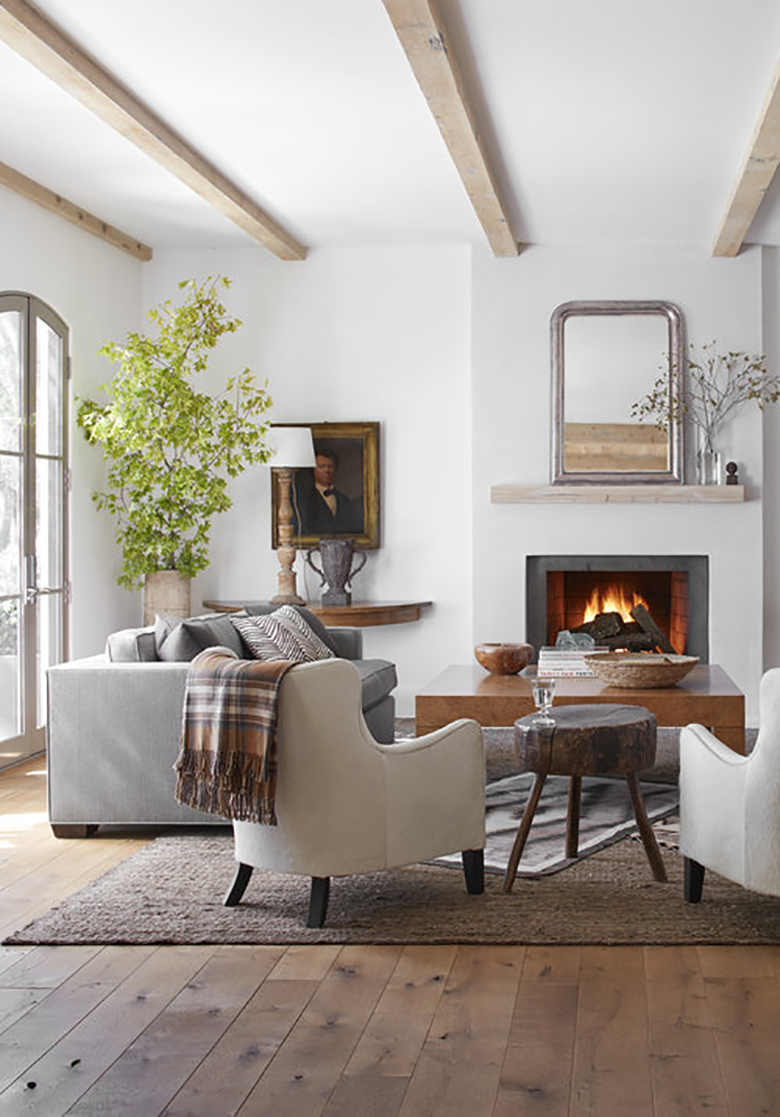
Source | Patrick Printy
Think of reclaimed woods and raw edges as accents. Like a rug or an upholstered slice of furniture, they tin assist marry the woods tones.
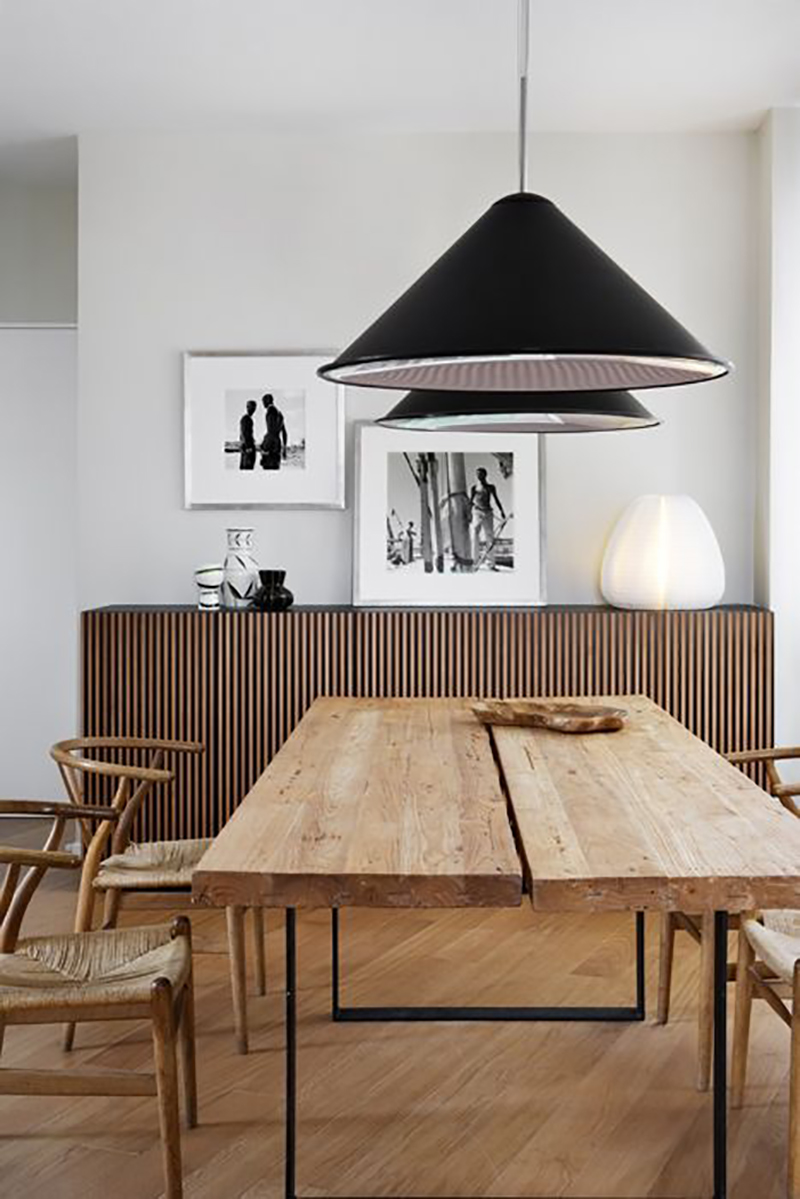
Source | Camino Alonso
A actually visible grain is your friend. Large wood grains make a space experience rustic and casual, while small wood grains brand the room feel formal and polished. Experience free to sprinkle in a fiddling fleck of both (the fashion y'all would pair pieces that are modern with those that are traditional), or read the room. Maybe the big wood grain is the casual vibe yous're going for. And here's a cheat: If yous're struggling to necktie the wood tones together, attempt for similar grains in the woods.
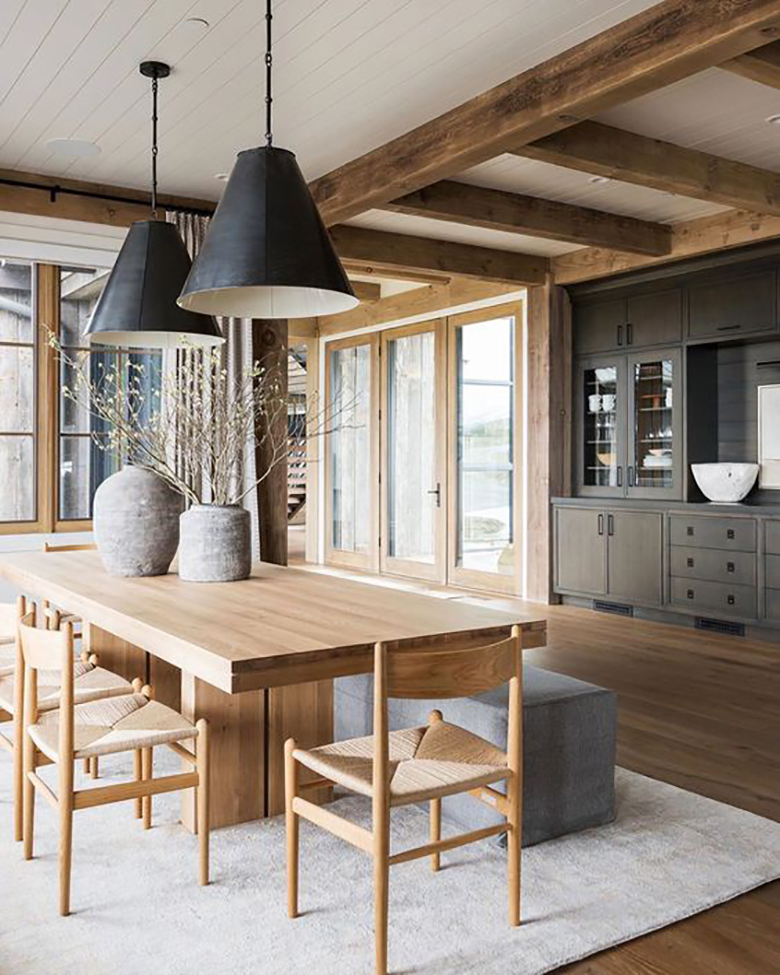
Source | Studio McGee
The carpet doesn't accept to match the wood tones. In fact, if yous can introduce contrast here — a cool rug under warm woods — it might help pull your undertones into focus, showing how all of your wood pieces "go together."

Source | Brad Krefman
The warmth of wood is making a big comeback so there are more forest tones, cabinets, and accessories to cull from now than ever before. If you e'er feel like things take gotten "out of hand" — too many wood tones, as well many finishes — pull back. Swap out a piece or two. Try sanding a few different wood pieces down and applying the aforementioned stain. Introduce some dissimilarity (I dear pairing black –even stained black!). Look to that dominant forest tone, and start over if you have to. You got this.
How Many Wood Finishes To Mix In Decorating The Living Room,
Source: https://www.chrislovesjulia.com/how-to-mix-wood-tones-like-a-pro/
Posted by: vustak1946.blogspot.com


0 Response to "How Many Wood Finishes To Mix In Decorating The Living Room"
Post a Comment